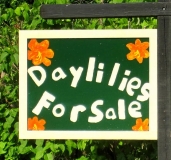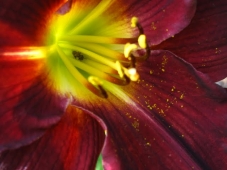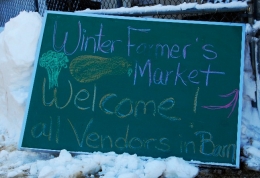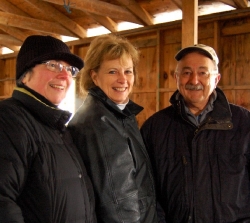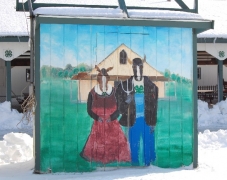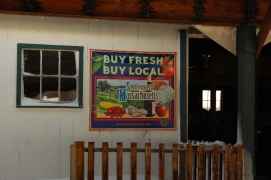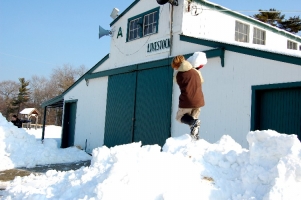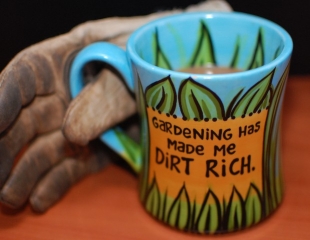Posts Tagged ‘Marshfield’
Early Spring Dance
New England, March 2012: So odd to have late June’s cameo appearance.
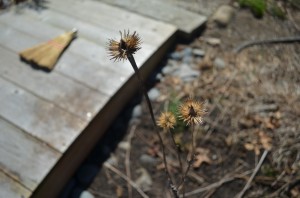
Last year's echinacea
We pensively enjoyed the abundant warmth and sunshine, while summer’s annoyances buzzed and swarmed around us, eventually driving us inside from the patio.
So many things sprang to life this week – the helleboros from Grace & Jerry, which must be thinned and would probably work better at the foot of the stone wall; our accidental hyacinth — a reliable, discarded gift from a beau to one of our teenage daughters, who are both in their 30’s now; streets bursting with magnolias already past their peak on Commonwealth Avenue, Boston; and, allergies galore.
I began clearing last year’s garden refuse and I re-installed the garden foot bridge on reset brick footings that lower the leading edge of the bridge so it’s neatly flush with the adjoining patio. This fundamental satisfaction I will enjoy forever. On walks at Humarock Beach I’m harvesting tumbled, black stones to supplement my medium hard-scape around the bridge; I will place the rounded rocks such that they become a Zen garden-like flow.
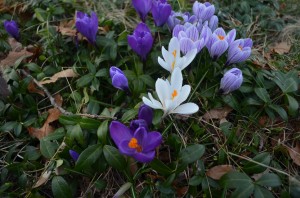
Crocus cast in myrtle
It’s too early to put out my little water feature because here in New England, in March or April, a sudden freeze can descend at any time. One doesn’t put out one’s tomatoes before Mother’s Day. My wish is for a brief cold snap to kill off the flying insects that hatched prematurely, then, a long, drawn out spring with just the right amount of rain. We can have the most spectacular Mays and Junes.
Spring is planning and planting and visioning and acting. Who knows how this season will progress? Is the sudden warmth a friendly lark or a portent of grave weather to come? Neither, both.
Daylilies For Sale
Marshfield is at its best in the summer. The Farmers Market runs every Friday (2-6pm). The beaches beckon. We dine al fresco. My garden flourishes and the yard becomes a leisurely extension of daily living. Other local resources make summer special, too. I recently discovered a new (to me) nearby marvel — Dick & Carolyn Houseman’s Daylilies For Sale on Union Street, Marshfield.
I know the Housemans from our bookclub. When Dick speaks, we listen. I had heard about their daylily event and Carolyn invited me to visit this year at the peak of their season. Post heat-of-the-day last Saturday, I dropped by and beheld the lilies of their fields. Wow.
no images were found
Carolyn gave me the overview: They started about 9 years ago on a partial whim, heading toward retirement.
Now both are retired and working tirelessly full time to tend the field that they started small and have grown to include over 250 daylily cultivars.Names like: Chicago Ruby, Cisty, Kindly Light, Maurice Rivero, Kwanso, Web of Intrigue, Siloam Red Ruby, Chicago Sun, Lemon Dazzler, Cedar, Monrovia Gem, Chicago (it goes on…). What’s with the preponderance of lilies named “Chicago?”
[Not a valid template]
They also have grown their mailing list to over 150 devoted followers. Loyal customers even bring plants to them – sometimes for identification, sometimes for donation. It suits them just fine and Carolyn marvels at friendly gardeners who stop by to exchange daylily tales. Gardeners are the nicest people, she says.
July is winding down. According to their schedule next weekend is the 2011 finale, until next year. Give ’em a shout, drop by, get on their mailing list (abijahfarm @ yahoo.com). Tell them a nice person sent you.
Marshfield Farmers Market Public Secret
Like Poe’s Purloined Letter, Marshfield’s Winter Farmers Market is hiding in plain sight.
Building on the steadily growing popularity of farmers markets locally, regionally and nationally, the folks who bring you the annual Marshfield Fair (Marshfield Agricultural and Horticultural Society) converted a corner of the fairgrounds into a Farmers Market that runs throughout the summer and fall harvest seasons (June-October). The Fair itself, a highlight of Marshfield’s summer, was founded in 1867.
Growing and harvesting a tradition
2010 marked the 5th season of the Marshfield Farmers Market. The summer market is establishing a new tradition for locavores and community farmers.
Late in 2010, they took it another step — converting the fairgrounds’ 4-H Club shed into a frosty, enclosed market for winter shoppers. It began as a pre-holiday event in November, 2010.
“It’s an experiment,” says Market Manager Karen Biaginni (pictured here with her team of Janet Scribner and Bill Frugoli). The result? So far so good.Following their early success, they added dates for January and February 2011 – next one is Saturday, February 26. (South Shore citizens take note!)
Market Day, January 2011
We stopped by the market on Saturday, January 29, which turned out to be one of the few sunny days in an otherwise messy month. Inside the 4-H barn we made the rounds.
First stop was Rise and Shine – a community supported agriculture (CSA) farm in Marshfield, run by Marta and Doug MacFarland. We selected from a variety of fresh root vegetables (onions, acorn squash, cabbage, small potatoes, turnips, rutabaga and popping corn on the cob). You can order in advance from their website and join their mailing list, too. Fan Carolyn Housman (Marshfield, MA) stated “I am really turned off by grocery store waxed and soft turnips when I can buy it from Marta.” We bagged colorful dwarf onions and a few squash.
[Not a valid template]
Tending to local agriculture
Marshfield Farmer’s Market enjoys membership in the Southeast Massachusetts Agricultural Partnership (SEMAP), an organization formed in 1998 to promote regional stewardship of agricultural lands (and aquaculture). According to their website
SEMAP was a creation of necessity, as there was a void in our part of the commonwealth. SEMAP became the organization providing a comprehensive source to help the region’s farmers and aquaculture operators navigate the many agencies and organizations that provide support and resources to farming operations in the region. (Bristol, Plymouth and Barnstable Counties)
Bringing it home
I was seduced by cinnamon from Guiseppe’s Cakes (Hanover, MA) , and chatted with owner Joseph Perella. To qualify for a spot in the market your offerings must be locally produced (this ain’t no flea market, baby) and Joe is proud of his product. I chewed through a tasty cinnamon twist — sweet and fresh, although I was hoping for the hard-to-find flaky variety. “My specialty is my cakes,” he explained. And he had the goods to prove it.
I munched and meandered down the aisle to the outpost for Open Meadow Farm (Lunenburg, MA), producer and purveyor of pasture-raised organic meat. Robin and Charles Dance get help serving customers from daughter Rebecca. Open Meadow Farm often takes orders in advance of market day from a growing band of happy customers who won’t be disappointed. Finally I know the answer to “where’s the beef!” [Not a valid template]
Psssst — Marshfield has a market, Pass it on
While most of the action occurs in the summer market (lots of produce, live music, crafts, bigger crowds), the winter market brings out true believers. It’s a great new tradition for our neck of the woods. But don’t take my word for it — bundle up and check it out yourself. For more information tell ’em to put you on their mailing list — jgscribner @ hotmail.com
So, how do you satisfy your locavore? Add a comment and share your sustainable story!
Dirt – A Love Story
It’s everywhere! We scrub it off our hands, our shoes, our personae. We think: clean = good, dirt = bad. Even gardeners succumb to dirt-riddance — we clean our gardens in the spring! But I’m telling you — dirt is your friend, not your enemy.
Here’s why.Get Smart – Eat Dirt!
Dirt harbors essential micro-organisms (like bacteria and fungi). “Yikes!“, you shriek, “That’s a good thing?“. Not just good, essential.
Soil scientists say each gram of soil (less than a teaspoonful) contains over 1,000,000,000 microbes (1 billion!), hosting over 10,000 different species. Here’s what some of these buggers do:
- grow our crops,
- convert wastes into compost,
- deliver vitamins to plants (in the “rhizosphere“),
- kill insects,
- consume toxic waste (like oil spills), and
- create soil in the first place
When soil is first made, for example after a volcano, some nutrients are missing, including nitrogen and carbon. Therefore, the first organisms to colonize the soil are generally nitrogen fixers and photosynthesizers that fix carbon. [DLC-ME]
Furthermore, a study conducted by researchers Dorothy Matthews and Susan Jenks at The Sage Colleges (Troy, NY) suggests that soil-borne germs play a role in reducing anxiety and enhancing learning. The study attracted lots of coverage, like “Can Bacteria Make You Smarter?” (Science Daily) and on Radio Netherlands “The Dirt Show“. Here the two researchers pose with dirt martinis (yuk!).
Anyway, get smart — eat dirt!
Dirt – Accidentally in Love
I began my wholesome relationship with dirt by accident, often the case with true love. I had planned a border along the front driveway and set to work removing a strip of sod about 2 feet wide and 80 feet long. I had loam delivered to create the bed where the sod once was. For expediency, I dumped the torn up sod in a low spot in the backyard; it formed a chunky mound on which I later dumped fall leaves and some additional loam on top to hold it all in place.
I finished the driveway border project, planting daylilies, astilbe and daffodils topped with a layer of bark mulch. Over the next couple of years I expanded the experimental mound in the backyard, adding a curved path with pea stone gravel, throwing in Bleeding Hearts, Oriental lilies, astilbe, a leftover Alberta Spruce, a red twig dogwood, Japanese dwarf spirea, ferns (etc.). What I found was — it didn’t matter what I planted there. Everything flourished. I had accidentally created a rich, organic home for my woodland plants! Dirt won me over and I’m accidentally in love!
I’ve since enlarged the accidental garden with yard clippings, chopped oak leaves, more loam, and barn “soil” from a nearby stable. In the expanded section, I added shrub roses, Columbine, an ornamental Japanese maple, American ginger, epimedium, sweet pepperbush (Clethra) and a stone wall. We’re happy together.
The Joy of Dirt
Back to the driveway border. It perennially struggles — its loamy bed dries out in summer because it doesn’t have enough organic material to store water for long. The day lilies come up OK, but they haven’t prospered; ditto the daffodils. Some day, I will re-visit this project and give it the tender lovin’ dirt it needs.
I’ve started another mound in the front yard: lawn clippings, chopped leaves, compost from the Marshfield transfer station (aka, the dump), and a decorative covering of bark mulch. It’s January and the mound is slumbering beneath a foot of snow, while microorganisms and worms are busily feeding and creating new dirt. Oh, joy!
Now it’s your turn — Share the dirt!
